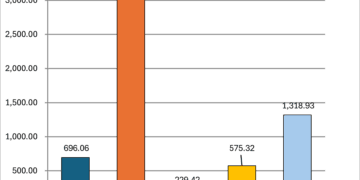Same Job, Slightly Different Build: Comparing Monkeypox and Smallpox Proteins
When scientists look at viruses, one way they understand how they work is by comparing their proteins — the molecular machines viruses use to interact with our bodies. Two related viruses, Monkeypox (Mpox) and Smallpox (Variola), both produce a protein that helps them dodge part of our immune system, called the complement system. This protein is known as a secreted complement-binding protein.
What we compared
We lined up the protein from Monkeypox (called D14L, 216 amino acids long) with the one from Smallpox (called D15L, 263 amino acids long). Think of amino acids like “letters” in a long word — if the word has 200–260 letters, even small spelling differences can matter.
What we found
Mostly the same “spelling”: About 92% of the letters are identical, and 94% are chemically similar. This means the two proteins are built very much alike.
Small changes along the way: There are about a dozen spots where one letter is swapped for another, and a few spots where Smallpox has an extra couple of letters compared to Monkeypox.
An extra tail in Smallpox: The Smallpox protein is about 47 letters longer at the end, like a longer tail.
Same job description: Both proteins are labelled in scientific databases as “secreted complement-binding protein,” belonging to the same family (region PHA02927). In other words, both are designed to interfere with the same immune pathway.
No extra “wiring changes”: The critical features, like the pattern of cysteine letters that shape the protein’s 3D structure, are conserved in both. We also checked for “sugar-attachment tags” (N-glycosylation sites), and found no new ones created in the Smallpox extension.
Why it matters
Even though the Smallpox version is a bit longer, both proteins still fall within the same family and serve the same role: blocking part of our natural immune defence. The differences are mechanical — extra length and a few substitutions — but they don’t change the basic label of the protein.
In plain words
Think of these proteins like two keys made for similar locks.
Monkeypox has the shorter key (216 teeth),
Smallpox has the slightly longer key (263 teeth),
The main teeth pattern is the same, so both still fit the lock.
The extra length on the Smallpox key might make it grip the lock a bit differently, but it’s still recognisably the same type of key.
Sidebar: Why the DNA Looks “Backwards”
If you look at the raw DNA entry for Monkeypox D14L, you’ll notice it says “coded_by complement(…).” This means the recipe for the protein isn’t written in the forward strand of the virus’s DNA, but on the opposite strand. To read it correctly, scientists take the reverse complement — like holding up text to a mirror so it makes sense.
That’s why the DNA sequences online may look reversed, but the protein sequence we compared (D14L) is already the properly translated version. So our Monkeypox vs Smallpox protein comparison remains valid.









































